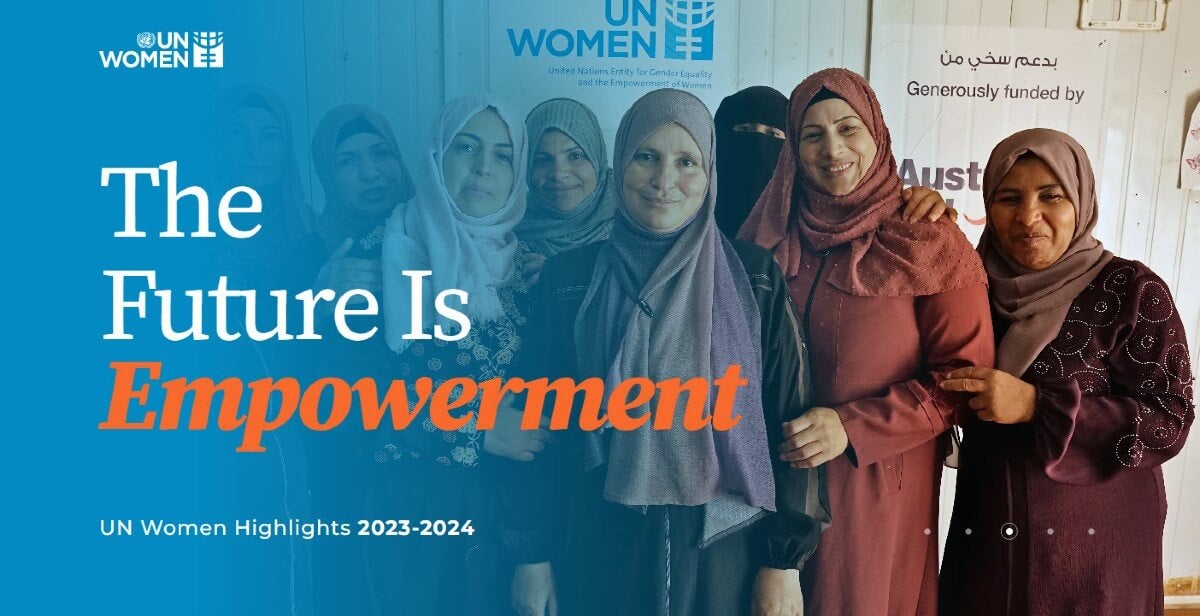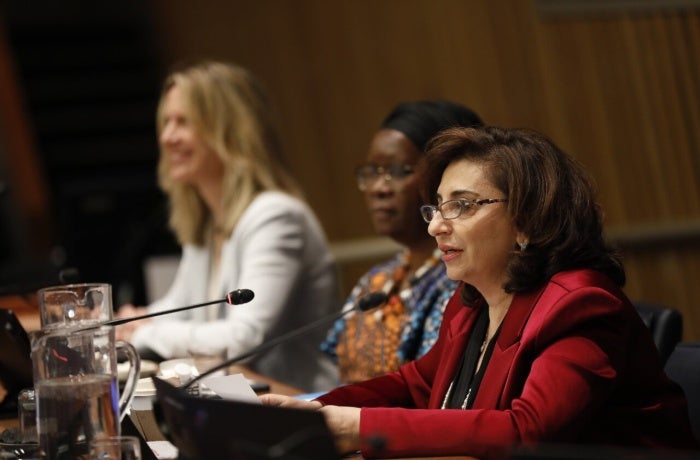What is gender-responsive budgeting?

Gender-responsive budgeting is a strategy that creates budgets that work for everyone. By considering and analyzing the unique and diverse needs of every person, gender-responsive budgets strive for a fair distribution of resources.
Current economic models and budgets can lead to fiscal policies and budgets that are biased. By not considering women’s needs, budgets can have unintended negative consequences. For example, according to recent surveys, the global value of unpaid care and domestic work for women aged 15 and over stands at around $10.8 trillion annually – three times the size of the world’s tech industry.
But when gender gaps are brought to the surface, governments can target available resources to address gender inequalities and support sustainable, inclusive development for all.
Gender-responsive budgets foster a sense of justice, strengthen government accountability, and support better alignment of national budgets with Sustainable Development Goals (SDGs).
Designing gender-responsive budgets
There is no one-fits-all application of gender-responsive budgeting, but we know what works.
For gender-responsive budgets to be effective, the priorities and needs of all people must be understood and included at every stage of the budget design and planning process.
UN Women has identified a series of steps to support their application:
- Introduce laws mandating gender-responsive budgeting and clear guidelines and tools for implementation.
- Analyse gender gaps and use findings to shape and monitor existing and future budgets.
- Increase transparency on how budgets are allocated and spent to address gender gaps, follow the money, and ensure people can hold their governments to account.
- Recognize the diverse needs of women, considering factors like socio-economic status, location, race, and ethnicity and encouraging lawmakers to engage with women from various backgrounds to ensure policies and public financing adequately support women and girls in all their diversity.
Implementing gender-responsive budgets
Gender-responsive budgets require a whole government approach, robust institutional frameworks, political will, laws in place to support equal distribution of resources, reliable data to fully understand the diverse needs of people, engagement with the private sector and civil society, and monitoring and evaluation systems to inform future budget adjustments.
The SDGs set 17 objectives for countries to meet by 2030. Goal 5 calls for gender equality and the empowerment of women and girls and has the only SDG indicator that measures the proportion of governments with systems to track and make public resource allocations for gender equality.
Amid a backdrop of a global polycrisis, national budgets remain strained with many unable to deploy the necessary investments to meet the SDGs and build stronger, more equal and resilient societies.
Over 100 countries have initiated efforts on gender-responsive budgeting to address gender equality and the historical underinvestment in essential services for women and girls.
Data from 105 countries shows that only 26 per cent have comprehensive systems to track gender equality allocations in the budget.
Without robust systems, countries cannot cost, allocate and spend resources to implement national gender equality laws and policies, such as allocating resources for gender-based violence prevention and research, investing in services for survivors of violence, creating frameworks to eliminate discrimination in the workplace and putting provisions in place that tackle gender-based discrimination in healthcare, among many others.
Despite existing gaps in gender equality spending, the data also shows that a majority of countries have made some progress on gender-responsive budgeting and are working to improve their systems.
Gender-responsive budgeting milestones
Tailored approaches to gender-responsive budgeting
Morocco
In 2013, Morocco’s finance ministry and UN Women launched the Center of Excellence for Gender-Responsive Budgeting. The yearly Gender Budget Report is a groundbreaking tool that provides lawmakers with insights into how public policies are working toward gender equality on a local and national level and informs voting on finance bills.
Austria
Austria is a global pioneer in gender-responsive budgeting and one of the few countries that has enshrined gender equality in the constitution and made gender equality one of nine elements against which budget proposals are assessed. Key policies include embedding gender equality in educational curricula, prioritizing the prevention of violence against women through the creation of helplines and shelters, promoting women in leadership, and boosting the participation of women in politics. Performance targets on gender equality in budgets are also assessed and results are reported to parliament and published online.
Colombia
The country’s National Development Plan fully integrates gender equality, and includes a gender budget tracer, mandated by law, to track how the budget is allocated and spent. This information is presented every year to parliament. To illustrate how this works in practice, the latest budget tracer data identified inadequate budget allocations for sexual and reproductive health. Nonstate actors used this information to advocate for more resources, which resulted in government budget increases.
Rwanda
The national gender strategy includes actions to address early childhood education, gender-based violence, land management, and education. The government routinely assesses the adequacy of budgets to identify resource gaps for implementing gender-responsive policies. Annual gender budget statements present gender objectives, budget allocations, and actual budget execution. This type of report enables the government (and nonstate actors) to follow the money and assess if budgets are delivering on policy commitments.












